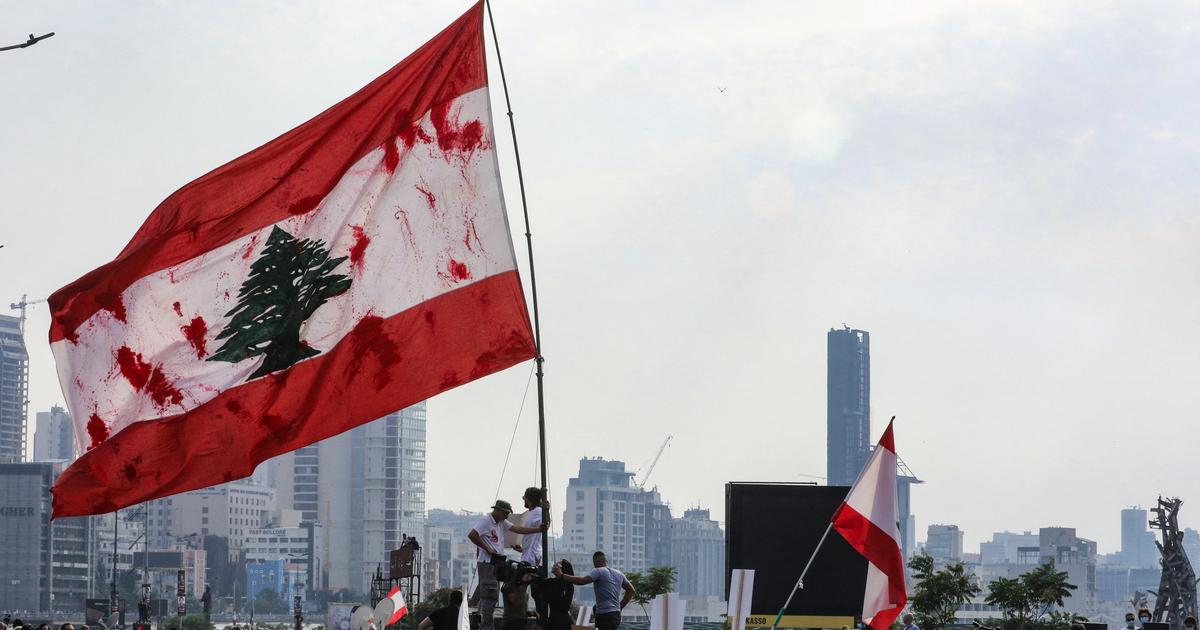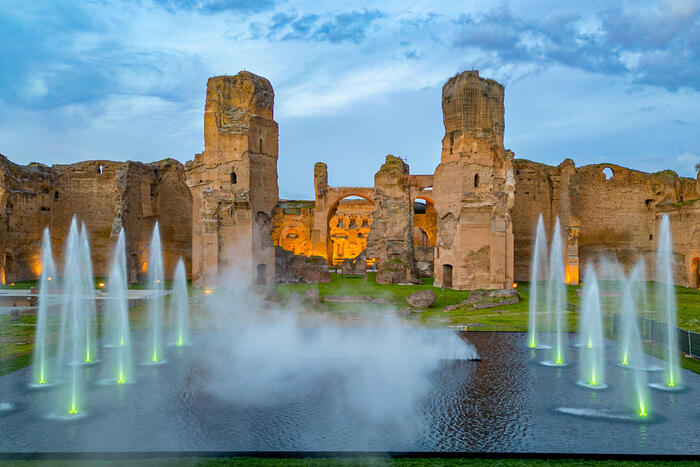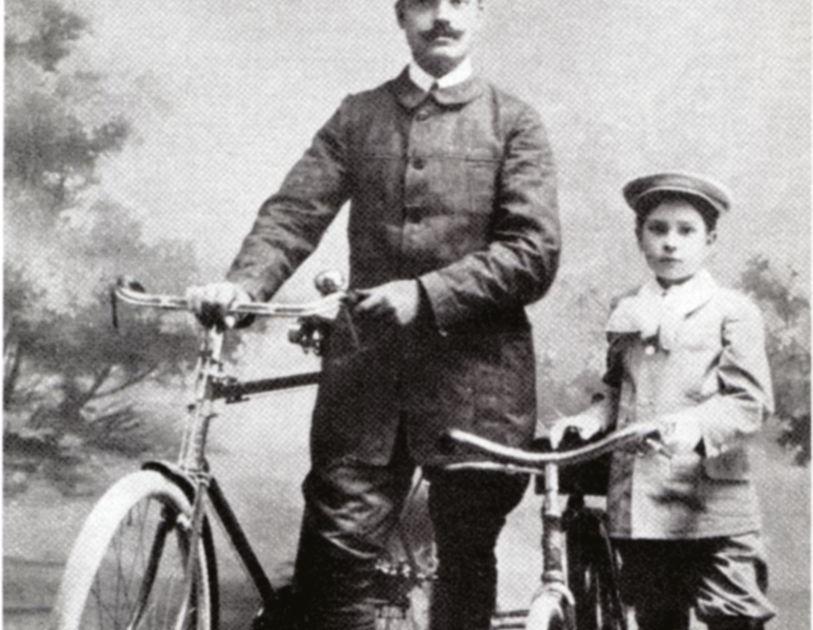In the sixties of the last century, an Oscar Niemeyer at the height of popularity after designing the new capital of his country, Brasilia, was commissioned to imagine a fairground that symbolized the accelerated process of modernization that Lebanon was going through, then nicknamed the Switzerland of the Middle East. In 1962 he began to imagine in the port Tripoli – the country's second city and its historic economic lung – an elliptical space of 72 hectares with an elegant boomerang-shaped pavilion 750 meters long for countries to install their exhibition spaces. They never got to do it.
More information
UNESCO warns about attacks on more than 150 cultural spaces in Ukraine
In 1975, with the fair virtually over after years of delays due to bloated budgets and technical errors, Lebanon entered a decade and a half of civil war. The esplanade became the scene of fighting, one of the walls in firing squad wall (you can still see the signs of bullets), and soldiers and militiamen looted the furniture and even tiles. The passage of time did the rest. Today, many look only abandoned, as if they are still waiting for the inaugural party they never had, while others are clearly degraded. A part of the roof of the international pavilion collapsed in 2016. Faced with this situation in a country immersed in a very serious economic and political crisis, UNESCO included the set last January by the emergency procedure in the lists of World Heritage and World Heritage in Danger. Meanwhile, some residents of Tripoli use the huge enclosure (it was designed to accommodate up to two million visitors a year) to walk the dog and take selfies.
As in other works by Niemeyer, you enter through a long ramp that gradually reveals the whole. There are 15 buildings marked by simplicity, curved shapes and a certain futuristic air. They were going to house a performance hall, a hotel, a helicopter landing platform, a bowling alley, a pavilion for children to play... The "experimental theater", conceived with a circular rotating stage that allowed to host "all kinds of shows", only lacked the equipment when the war broke out. Today it is a dark space full of puddles from which the steel bars of reinforced concrete hang. As acoustic panels were never added, each step generates a huge echo. The Lebanese Pavilion, which is reflected in a swimming pool, is reminiscent of the Itamaraty Palace, the headquarters of the Ministry of Foreign Affairs that he designed in Brasilia.
Interior of the Experimental Theatre designed by Niemeyer in Tripoli.Oliver Marsden
"I did not want to repeat the typical international exhibitions of the time, with their independent pavilions and architecture so bad and structures I hate," Niemeyer wrote in his memoirs, published in 2005. "Architecture would be simpler and more disciplined."
The buildings survived the war first. Located near the port and the main transport arteries, it became a battlefield. Armed forces and militias used the buildings as barracks and one of the structures to hide tanks. It was, for example, an important base of the Syrian Army in its retreat to northern Lebanon in 1982, when Israel invaded the south of the country and surrounded Beirut. The space was chosen in 1987 for the presentation of condolences by the prominent local politician who gives the Fair its name: Rachid Karami. He served eight times as prime minister and was killed with a bomb in his helicopter during the civil war.
It has also been saved, thanks in part to citizen mobilization, from plans such as its total demolition to build a theme park "similar to a Middle Eastern Disneyland"; the construction of a stadium for the Asian Cup of football, which Lebanon hosted in 2000; or its conversion into a permanent fair of Chinese products. In 2019, the Government took out a tender to accommodate a technological and business center without distorting the concept of space. An international jury of architects chose an underground proposal. Two months later, the Lebanese economy entered what the World Bank defines as one of the three biggest economic crises in the world since the mid-nineteenth century. Tripoli became the epicenter of citizen protest and the project was paralyzed.
Open air theatre at the Tripoli Trade Fair.Oliver Marsden
UNESCO considers it "one of the most representative works of modern architecture of the twentieth century in the Arab States", despite "the deterioration of most of its structures and the danger to the integrity of several of its components due to the aging of concrete". The UN agency's experts highlight its "scale, bold structural solutions, architectural expression and large modernist gardens and public spaces." Here, too, Niemeyer worked hand in hand with landscape painter Roberto Burle Marx.
Following the inscription on the heritage lists, acting Lebanese Prime Minister Nagib Mikati, originally from Tripoli, expressed his hope that the work will receive "from now on the international attention it deserves." The place has seen two interventions. One, in 1997, without consulting Niemeyer, although he was alive. Unesco regrets more however a later one: the conversion of the hostel prototype into a hotel, erasing the traces of the original design. It closed in 2018. The ensemble has meanwhile hosted some exhibitions and, recently, a rock concert. The city will be in 2024 Arab capital of culture.
State of the Rachid Karami Fair Pavilion, with the roof collapsed. Oliver Marsden
Wassim Naghi, the architect, university professor and former president of the Union of Mediterranean Architects who submitted the candidacy along with Jad Tabet, former president of the order of engineers and architects in Beirut, sees the inclusion in the UNESCO lists as a "lifeline". "Sometimes the reason for the long decline has been politics; others, a centralized policy that focused on Beirut," he says by telephone before reviewing the moments since the end of the civil war that have generated instability and scared off potential investors: the assassination of Rafic Hariri in 2005, the war between Israel and Hezbollah a year later, the contagion (particularly in Tripoli) of the civil war in neighboring Syria...
Naghi now pins his hopes on foreign investors, mainly from the Lebanese diaspora. "Given the humanitarian need to ensure education and health in Lebanon, a public investment would be considered an unnecessary luxury," he admits. He stresses that all buildings, except the two theaters (the experimental and the outdoors), can be used "for whatever use", as long as their DNA is respected, and insists on the importance of the whole receiving a "harmonious and coherent" use, not a myriad of disconnected projects. His model is to give it the life that today has the set of buildings of the Ibirapuera Park in São Paulo, designed by Niemeyer in the fifties of the last century.
Oscar Niemeyer, with a model of the Niemeyer Center in Avilés (Spain), in 2010. / Oscar Niemeyer Studio.
UNESCO highlights two values of the project. One is its interculturality. Not only because Niemeyer brought to the Middle East the concepts he had developed in his native country, but also because of how he worked with Lebanese engineers and contractors, and left his mark on a new generation of local architects, such as Joseph Philippe Karam or Maurice Hindieh. Just as the creation from scratch of Brasilia sought to mitigate the weight of the southeast (Rio de Janeiro and São Paulo), the choice of Tripoli sought to rebalance the rise of Beirut.
The other, its role as a testimony of the modernization processes that the Arab world was then experiencing, with Algeria recently independent, Iraq taking its first steps without a monarchy and Nasser in full swing in Egypt after the Suez Canal crisis. After decades of European colonial subjugation, architecture allowed them to visually convey their desire for self-assertion and integration into the world. From the same period are the fairgrounds of Baghdad or Damascus.
Esplanade of the fairgrounds. On the left, the outer dome of the Experimental Theatre.Oliver Marsden
The Tripoli fair is, in fact, a kind of duo with the University of Constantine, in northeastern Algeria, which Niemeyer designed between 1969 and 1972, explains Rodrigo Queiroz, who has studied the artist's work and is a professor of architecture at the University of São Paulo (USP). "It is characterized by large open spaces. It is a very elementary architecture. A large public square, following his vision as a communist architect that space had to be freed up for the people, and a pavilion with a light, slender structure," says Queiroz, who has closely followed efforts to restore the Rachid Karami.
Niemeyer's most active years abroad largely coincide with one of Brazil's darkest periods, the military dictatorship (1964-1985). Queiroz explains that the architect – a communist militant – was by then a recognized professional outside who had participated in the international team that designed the United Nations headquarters in New York. He had vast experience and had consecrated himself in his homeland with Brasilia.
Paris was his base during that fortnight of years. In Europe he found quality in construction and design, the opportunity to do works with good manufacturing and generous budgets, says the professor at the University of São Paulo. And what he brought to his European colleagues was the calculation experience of Brazilian engineers. His best-known works of this period are the headquarters of the French Communist Party, in Paris, and that of the Italian publishing house Mondadori, in Milan.
Subscribe to continue reading
Read without limits
Read more
I'm already a subscriber

/cloudfront-eu-central-1.images.arcpublishing.com/prisa/KXPMPMEMAVHS7B77EZ7QJS4NRQ.jpg)


/cloudfront-eu-central-1.images.arcpublishing.com/prisa/OMJAPDWL3LJ25DTNVISYZOUYII.jpg)




